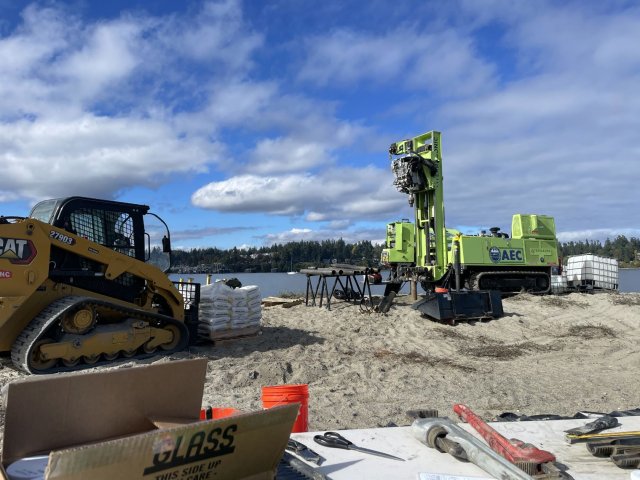East Harbor Sediment Cleanup Area
EPA divided the Wyckoff-Eagle Harbor site into three cleanup areas (called "operable units"). The East Harbor Sediment Operable Unit, also called OU1, includes about 100 acres of sediment on the bottom of Eagle Harbor that became contaminated with creosote and other wood preserving chemicals released from the former Wyckoff wood treating facility. Learn about EPA's other cleanup areas at this site.
Cleanup Status
More cleanup work is needed in the intertidal The area of shoreline between the high tide and low tide marks. area. In 2018, EPA issued an amended Record of Decision (cleanup plan) to address parts of the original remedy that are not functioning as expected. EPA required institutional controls Institutional Controls are non-engineered instruments, such as administrative and/or legal controls, that help minimize the potential for human exposure to contamination and/or protect the integrity of a remedy by limiting land or resource use. Examples include fishing restrictions, deed restrictions, and the posting of warning signs outside of a contaminated site. to restrict beach access and provide additional warnings regarding the harvest and consumption of contaminated seafood. These include restrictions on anchoring, dredging or other sediment disturbance to protect capped areas.
Current cleanup activities
Additional cleanup actions are needed in the soil and groundwater at the former Wyckoff wood treating facility, and in the adjacent beach sediments. EPA issued a cleanup decision in May 2018, selecting additional cleanup actions for the beach areas. The May 2018 cleanup plan also includes improvements to the site access road and replacement of the metal sheet pile wall around the perimeter of the facility.

Future cleanup activities include dredging and offsite disposal of heavily contaminated sediment. The residual sediment will be capped with material designed to prevent contamination from coming to the surface.
Past cleanup activities
More than 70 acres of sediment in Eagle Harbor have been capped with a thick layer of clean sand. The cap prevents fish and other marine organisms from contacting the contamination. Special rules for boaters are in place to prevent activities like anchoring, which could damage the cap.
The cap in the subtidal The area of shoreline that is always submerged, even at the lowest tide. area is working as intended. EPA transferred responsibility of operations and maintenance of subtidal sediments to the Washington Department of Ecology. Ecology is planning to conduct subtidal sediment cap monitoring in 2024.
Related Documents
- Fifth Five-Year Review Report (pdf) - July 2022 (site-wide, including East Harbor)
- Record of Decision Amendment for East Harbor and Soil and Groundwater Operable Units (pdf) - May 2018
- Explanation of Significant Differences for East Harbor Operable Unit (pdf) - September 2007
- Record of Decision for East Harbor Operable Unit (pdf) - September 1994
You can also search for more site documents in EPA's publicly available collection.
